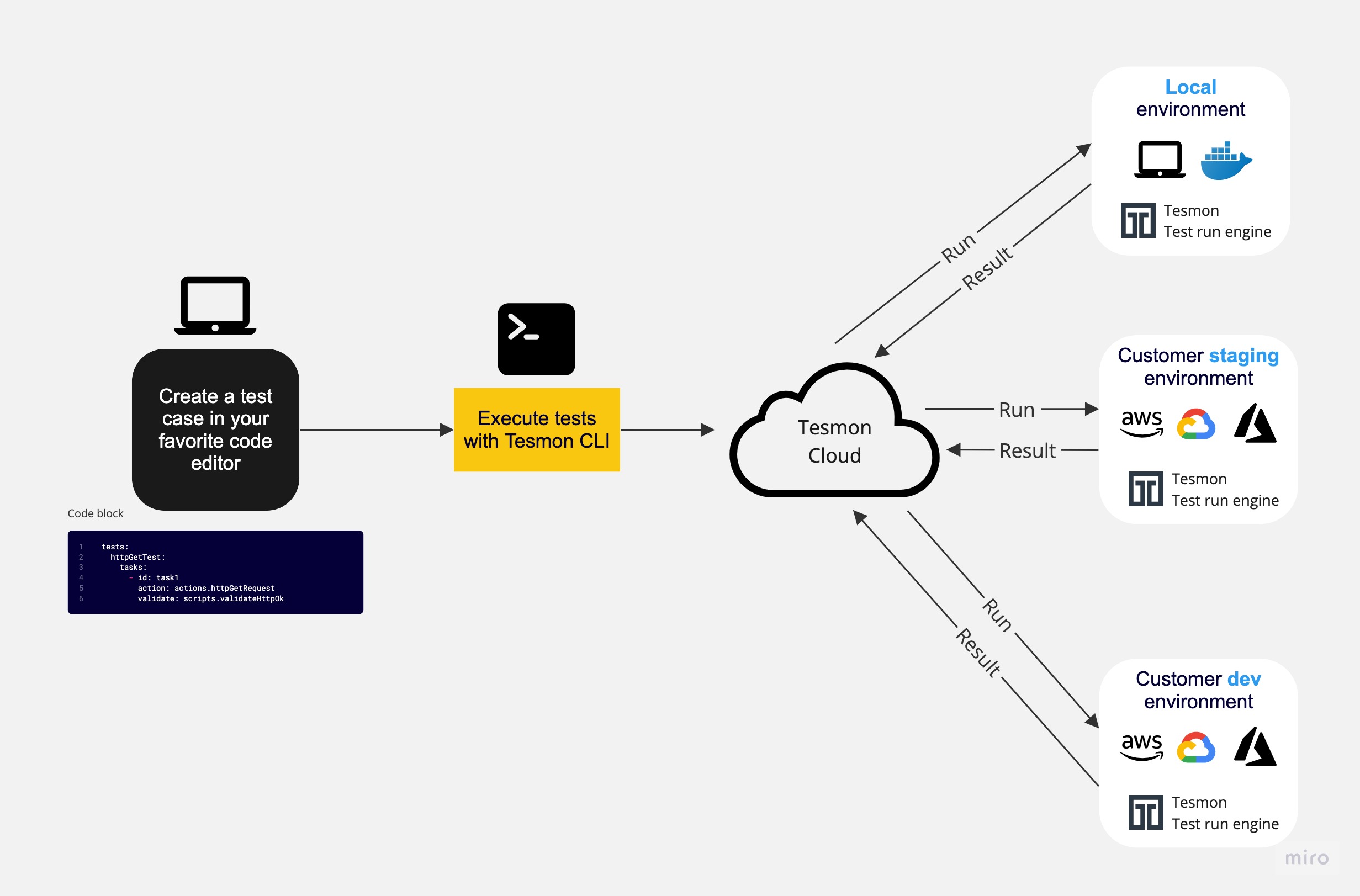Environments
Environments in Tesmon serve as a foundational component in the testing process, establishing a direct mapping to the Test Run Engine. These environments can represent a range of deployment scenarios, including local machines and cloud environments where both your distributed system and the Test Run Engine are deployed.
Tesmon's environment feature enables you to adapt your testing approach to different deployment scenarios, ensuring your software performs reliably across various environments.

Use cases
Case 1
For instance, consider a team consisting of 5 members. Each member may have their own environment, resulting in 5 individual environments. Additionally, there could be a dedicated development environment hosted on AWS, GCP, or Azure. In addition to the development environment, there may be a staging environment and a production environment, bringing the total number of environments to 8.
Having multiple environments offers the flexibility to execute the same test cases across different environments. This ensures comprehensive coverage and allows for thorough testing of your microservices in various scenarios.
Case 2
Another scenario to consider is the staging environment, which often contains a new version of services that require thorough testing. Tesmon allows you to create a TesmonLang version that aligns with the functionality of the staging environment. By doing so, you can execute specific test cases against this environment and ensure that the new version meets your expectations.
Simultaneously, you can continue running the previous version on other pre-production environments, maintaining stability and minimizing any potential disruptions during the transition phase. This becomes particularly significant when working with CI/CD pipelines, as it allows you to seamlessly move your microservices code and integration tests together, ensuring comprehensive and reliable testing throughout the development lifecycle.
Create environment
To create an environment in Tesmon, follow these steps:
- Navigate to https://app.tesmon.io/environments.
- Click on the "Create Environment" button.
- Provide a name for your environment. Choose a descriptive name that helps you easily identify and reference the environment.
- Optionally, provide a summary for your environment. This summary can be used to provide additional details or context about the environment.
- Click on the "Create" button to create the environment.